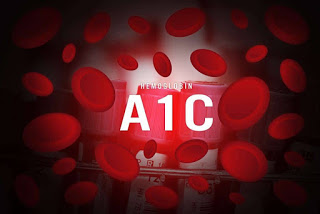I do a lot of screening for diabetes in my clinical practice, and when I find a new case of diabetes, my patient and I have a good talk about how I reached that diagnosis, and also about what type of diabetes that person has.
As summarized in the 2018 Diabetes Canada Guidelines, the diagnosis of diabetes can be made by any of the following blood tests: (note – in pregnancy, some criteria are different)
- fasting blood sugar of 7 mmol/L or greater; OR
- hemoglobin A1C (HbA1C) of 6.5% or greater; OR
- blood sugar of 11.1 or greater after a 2 hour, 75g oral glucose tolerance test; OR
- random blood sugar of 11.1 or greater
If there are symptoms of high blood sugar (thirst, frequent urination, blurry vision, unintentional weight loss etc), then one of the above is enough to make the diagnosis. If there are no symptoms, then a repeat test at the lab on a different day has to be done to confirm it.
It is important to note that A1C, (which is a 3 month diabetes ‘report card’ blood test measuring the percentage of red blood cells with sugar stuck to them), can be misleading in several scenarios:
- A1C can be falsely elevated in conditions of slower red blood cell turnover, such as anemia due to iron, B12 or folate deficiency, or hemoglobin disorders like thalassemia (so the A1C could suggest diabetes when diabetes is not present);
- A1C can be falsely low in conditions of accelerated red blood cell turnover, such as hemolytic anemia (thus making blood sugar control look better than it actually is);
- A1C reads up to 0.4% higher with the same blood sugar in African Americans, American Indians, Hispanics, and Asians, compared to Caucasians.
- A1C rises by 0.1% per decade of life (this may not be overly clinically relevant as we often relax the A1C treatment targets to some extent with age as well)
- A1C is not recommended for diagnostic purposes in children and adolescents (as the sole diagnostic test), in pregnant women as part of routine gestational diabetes screening; those with cystic fibrosis; or suspected type 1 diabetes.
PREdiabetes refers to blood sugars that are above normal, but not high enough to be diagnosed as type 2 diabetes. People who have pre diabetes are at a high risk of progressing to type 2 diabetes. Prediabetes is diagnosed by any of:
- fasting blood sugar between 6.0-6.9 mmol/L; OR
- blood sugar between 7.8-11.0, at 2 hours on a 75g oral glucose tolerance test; OR
- A1C between 6.0 – 6.4%
As for what type of diabetes a person has, once diabetes is diagnosed: There are two main types of diabetes. Type 1 diabetes is an autoimmune condition where the pancreas is unable to produce insulin. Type 2 diabetes occurs when the pancreas can’t make as much insulin as that person’s body needs, or the body does not effectively use the insulin that is produced (called ‘insulin resistance’). There is also gestational diabetes, which is diabetes diagnosed during pregnancy, and then there are some more rare genetic forms of diabetes. Diabetes can also be associated with medication use, such as steroids. Usually the type of diabetes is clear based on history, risk factors, and clinical findings, but sometimes special testing is done to determine what type.
Follow me on twitter! @drsuepedersen
www.drsue.ca © 2018












